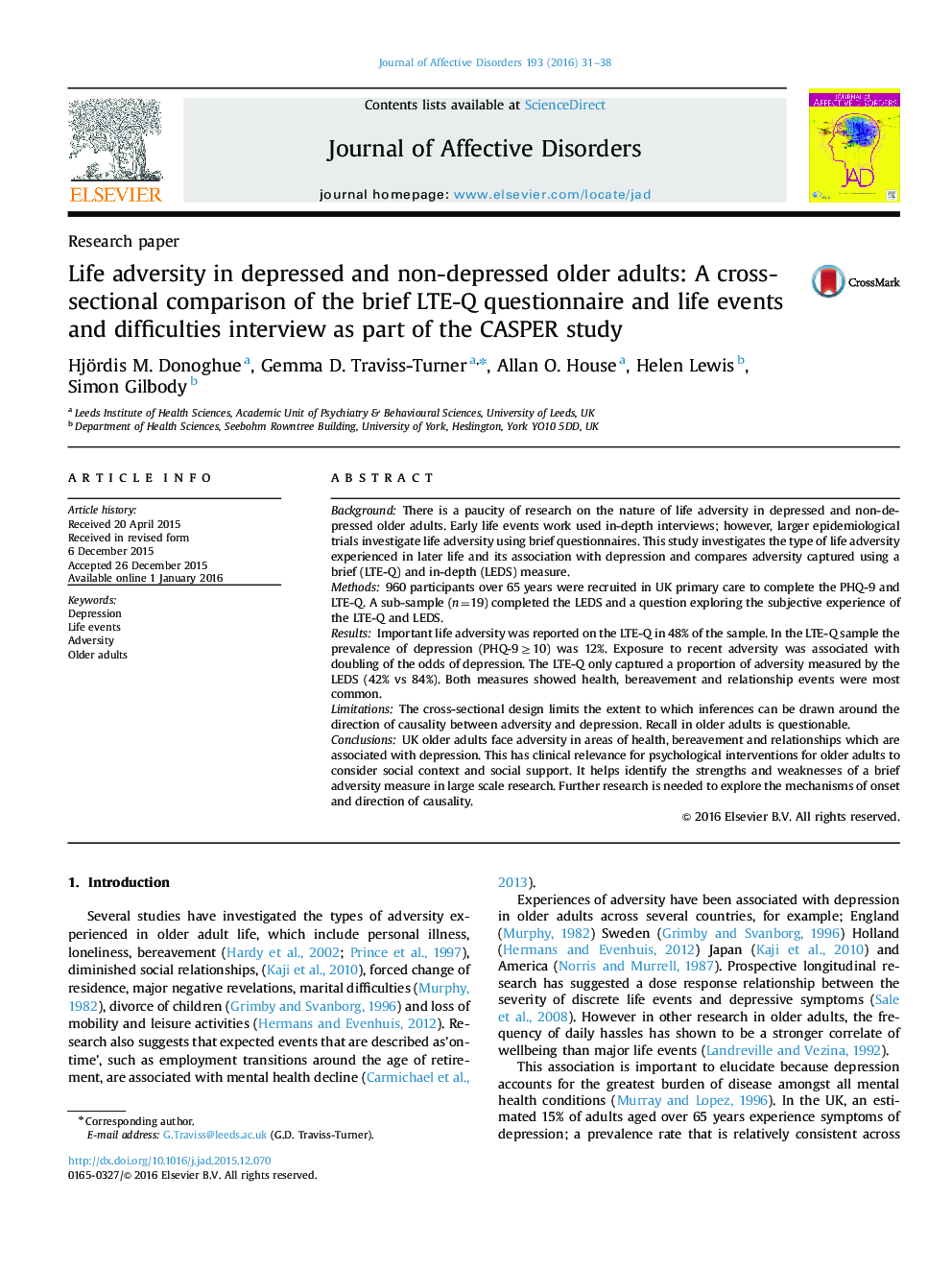| Article ID | Journal | Published Year | Pages | File Type |
|---|---|---|---|---|
| 6230419 | Journal of Affective Disorders | 2016 | 8 Pages |
â¢Depression and recent adversity are examined in a large cohort of UK older adults.â¢Prevalence of depression in this sample is 12%.â¢Exposure to recent adversity is associated with doubling of the odds of depression.â¢Adversity in areas of health, bereavement and relationships are associated with depression.â¢The brief LTE-Q only captures a proportion of adversity measured by the LEDS.
BackgroundThere is a paucity of research on the nature of life adversity in depressed and non-depressed older adults. Early life events work used in-depth interviews; however, larger epidemiological trials investigate life adversity using brief questionnaires. This study investigates the type of life adversity experienced in later life and its association with depression and compares adversity captured using a brief (LTE-Q) and in-depth (LEDS) measure.Methods960 participants over 65 years were recruited in UK primary care to complete the PHQ-9 and LTE-Q. A sub-sample (n=19) completed the LEDS and a question exploring the subjective experience of the LTE-Q and LEDS.ResultsImportant life adversity was reported on the LTE-Q in 48% of the sample. In the LTE-Q sample the prevalence of depression (PHQ-9â¥10) was 12%. Exposure to recent adversity was associated with doubling of the odds of depression. The LTE-Q only captured a proportion of adversity measured by the LEDS (42% vs 84%). Both measures showed health, bereavement and relationship events were most common.LimitationsThe cross-sectional design limits the extent to which inferences can be drawn around the direction of causality between adversity and depression. Recall in older adults is questionable.ConclusionsUK older adults face adversity in areas of health, bereavement and relationships which are associated with depression. This has clinical relevance for psychological interventions for older adults to consider social context and social support. It helps identify the strengths and weaknesses of a brief adversity measure in large scale research. Further research is needed to explore the mechanisms of onset and direction of causality.
